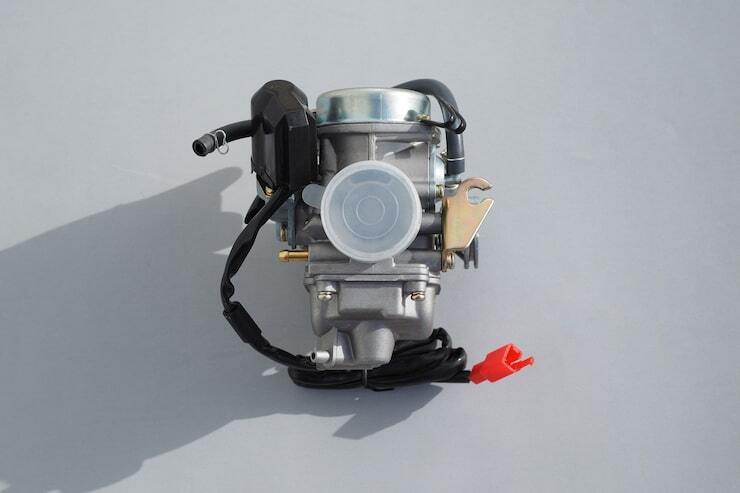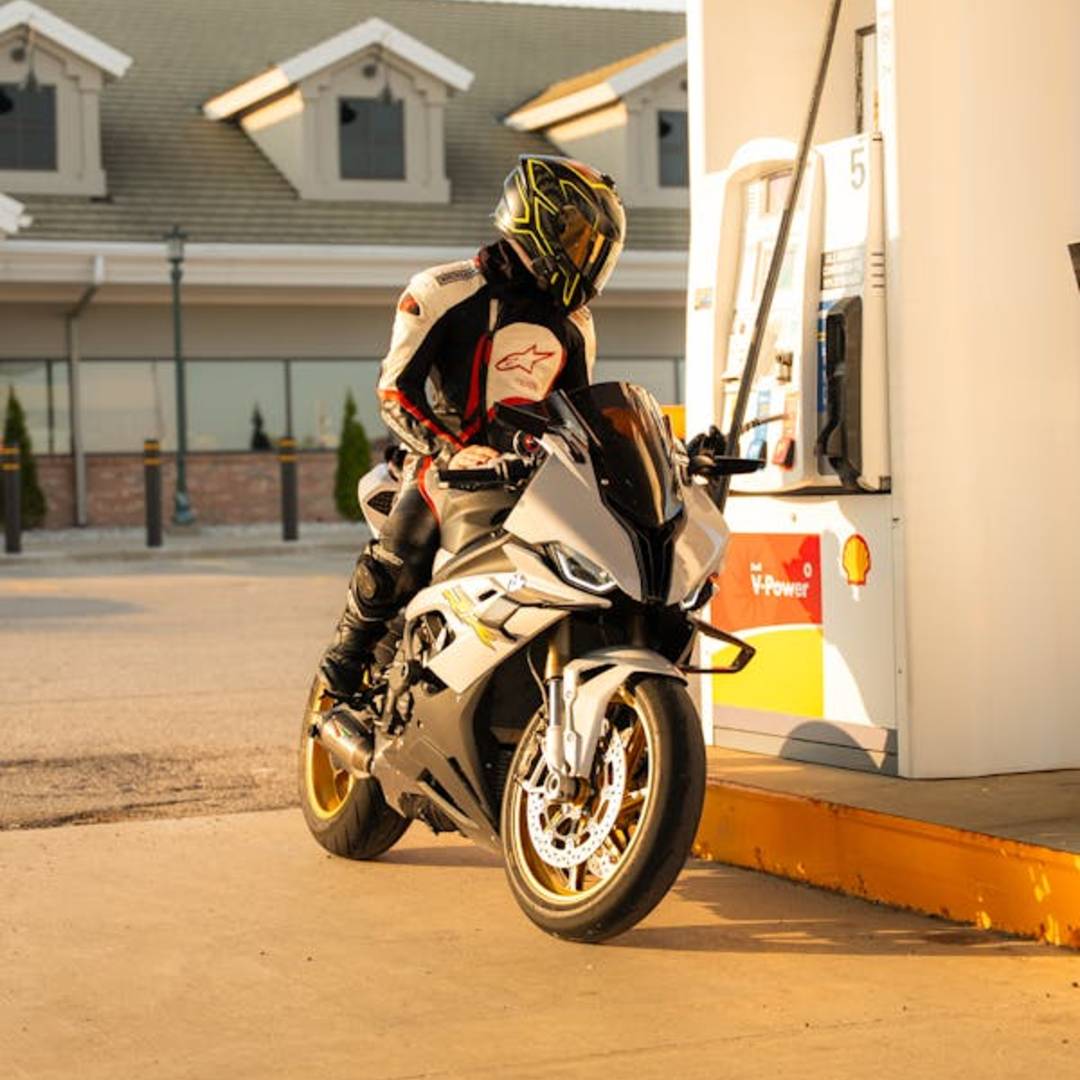How Motorcycle Fuel Pump Works
Posted by Schnitz Racing on 20th Aug 2025
Introduction to Motorcycle's Fuel Pump
How your motorcycle's fuel pump works is something every rider should know. Your bike's fuel pump is an important part of your motorcycle's fuel delivery system to make sure your engine has the correct amount of fuel. Regardless of whether you ride on a high-performance sport bike or a heavyweight cruiser, the fuel pump is an essential component of your motorcycle.
Motorcycles rely on sophisticated fuel injection that needs accurate fuel delivery at certain pressures. Whereas older engines may have simply utilized a gravity feed, or even a mechanical pump, fuel-injected motorcycles now require a fuel pump that can provide a certain flow, at a given pressure to maintain the fuel pressure.
The motorcycle fuel pump has changed to meet varying engine and emission requirements. With better engine efficiency and increased power, fuel systems are now more complicated as the engine needs a specific amount of fuel volume and consistent pressure to fuel the pump, over a wide range of RPM. At Schnitz Racing, we know that great bikes are built with the highest quality parts. We take pride in having a great line of quality products to make your motorcycle perform its best.
How Your Motorcycle Fuel Pump Works
The operation of motorcycle fuel pumps involves a careful process that ensures your engine receives the right amount of fuel at the correct pressure. This process can be broken down into three fundamental stages that work continuously while your engine is running.
Drawing Fuel
The fuel pump's primary function begins with drawing fuel from the fuel tank through the fuel line. This process starts when the pump motor creates a vacuum that pulls fuel through the pump strainer, which serves as the first line of defense against debris entering your fuel system.
Most motorcycle fuel pumps are mounted inside the fuel tank, submerged in fuel to ensure consistent operation and prevent anything from entering that could damage the pump. The pump's intake draws fuel through the strainer, which filters out large particles and debris that could clog fuel injectors or damage components.
Pressurizing Fuel
Once fuel enters the pump, it must be pressurized to meet the demands of your motorcycle's fuel injection system. Electric fuel pumps use a gear mechanism to pressurize fuel, creating the high pressure necessary for proper injector operation.
The pressurization process must maintain consistent fuel pressure. Most motorcycle fuel injection systems operate at pressures between 35-60 PSI, depending on the specific engine design and performance requirements. This pressure must remain stable to ensure proper fuel atomization and combustion efficiency.
Delivering Fuel
The final stage involves delivering fuel through the fuel line to your engine's injectors. This delivery system must maintain consistent fuel pressure while accommodating varying fuel demand based on throttle position and engine load.
The delivery process relies on a closed-loop system that includes fuel rails, fuel injectors, and a return line that routes excess fuel back to the fuel tank. This ensures that fuel injectors receive consistent fuel pressure while preventing your engine from overheating.
Main Components of Motorcycle Fuel Pump

Understanding the components within your motorcycle's fuel pump assembly helps diagnose issues and plan maintenance. Each component plays a specific role in ensuring reliable fuel delivery.
Pump Motor
The pump motor serves as the driving force behind fuel delivery, typically utilizing a brushed DC motor designed for continuous operation. These motors are engineered to operate while submerged in fuel, using the fuel itself for cooling and lubrication. Electric fuel pump motors must overcome varying fuel viscosity, temperature changes, and electrical voltage fluctuations while maintaining consistent performance. High-quality motors incorporate precision bearings and robust designs that can withstand the demanding conditions inside a fuel tank.
Pump Strainer/Sock
The pump strainer, commonly called a fuel sock, provides the first level of filtration in your fuel system. This component prevents large debris from entering the pump and potentially damaging internal components or clogging fuel injectors.
Strainers are typically constructed from fine mesh materials that can filter particles down to specific micron ratings. The mesh design must balance filtration efficiency with fuel flow capacity to avoid restricting fuel delivery under high-demand conditions.
Internal Filter
Beyond the primary strainer, many motorcycle fuel pumps incorporate internal filters that provide additional cleaning before pressurization. These filters typically offer finer filtration than the strainer, removing smaller particles that could damage fuel injectors.
Filter maintenance intervals vary based on fuel quality and riding conditions. Contaminated fuel or dusty environments may require more frequent filter replacement to maintain optimal fuel system performance.
Fuel Level Sender
The fuel level sender provides fuel quantity information to your motorcycle's fuel gauge. This component typically utilizes a float mechanism connected to a variable resistor that changes resistance based on fuel level. Accurate fuel level sensing is crucial for fuel injection system operation to optimize performance and emissions.
Pressure Regulator Electrical Connections
The pressure regulator maintains consistent pressure by controlling fuel return flow back to the fuel tank. This component must respond quickly to pressure changes while maintaining stable regulation across varying flow demands.
Electrical connections provide power to the fuel pump motor and communication signals between the ECU and fuel pump. These connections must withstand fuel exposure, vibration, and temperature cycling while maintaining reliable electrical contact.
Types of Fuel Pumps Found on Motorcycles
Fuel pump designs are different between motorcycles and have both benefits and drawbacks. Knowledge of these differences is useful when looking for replacement parts and or if you’re planning to upgrade your motorcycle.
Electric Fuel Pumps
Electric fuel pumps are most used in fuel injection systems in motorcycles, as the pump can be operated on or off as needed, and the fuel can be more precisely measured. Electric pumps power impeller or gear mechanisms to raise the pressure of fuel for injection systems. The main benefit of an electric pump is the ability to hold constant fuel pressure through all operating ranges, from idle to redline, and under all throttle conditions. Electric pumps also offer higher pressure and flow rates than mechanical versions, which are critical for high-performance applications.
Mechanical Fuel Pumps
Mechanical fuel pumps, while less common in modern motorcycles, still appear in some bikes, particularly older or simpler engine designs. These pumps utilize engine motion, typically through camshaft or crankshaft-driven mechanisms, to create fuel pressure.
Maintenance of mechanical fuel pumps typically involves checking diaphragms, valves, and mounting hardware. While generally reliable, mechanical pumps can develop leaks or lose pressure capability over time, requiring rebuild or replacement.
Vacuum-Operated Fuel Pumps
Vacuum fuel pumps represent a hybrid approach that utilizes engine vacuum to operate fuel delivery mechanisms. These pumps are commonly found in older motorcycle designs and some specific applications where electric pumps may not be practical.
Modern applications rarely utilize vacuum fuel pumps due to the superior performance and control offered by electric fuel pumps. However, understanding their operation is valuable for maintaining older motorcycles or specialized applications.
Conclusion
Understanding how motorcycle fuel pumps work is essential for maintaining optimal performance and diagnosing fuel system issues. From the initial fuel drawing process through pressurization and delivery, each component in your fuel pump plays a crucial role in ensuring your engine receives the precise fuel delivery it requires.
Whether your motorcycle utilizes electric fuel pumps, mechanical fuel pumps, or vacuum-operated systems, proper maintenance and understanding of these components will help you maintain peak performance. The fuel filter, fuel tank, and entire fuel system work together to support your engine's fuel injection system requirements.
At Schnitz Racing, we understand that every component matters when it comes to performance. Your fuel pump may operate behind the scenes, but its proper function is essential for unleashing your motorcycle's full potential and ensuring reliable operation for years to come.



